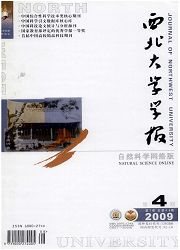

 中文摘要:
中文摘要:
目的确定东秦岭沙河湾花岗岩体形成时代、源区性质及其成因。方法在锆石内部结构的CL图像研究基础上,用LA-ICPMS和MC-ICPMS测定锆石U—Pb年龄及Hf同位素组成,探讨寄主花岗岩、暗色闪长质包体及及围岩中闪长质脉体锆石U-Pb年代学及Hf同位素组成特征。结果寄主花岗岩、暗色包体及其围岩中闪长质脉体分别存在210Ma和197Ma,197Ma和188Ma以及230Ma和210Ma两组年龄的锆石;对应的εHf(t)值在一个略微偏正或负的范围内变化,指示该岩体非单一源区岩浆物质所能形成,至少是两个源区岩浆混合作用的结果。结论该岩体是以新元古带古老地壳物质熔融为主体的壳源岩浆与源自略富集地幔的幔源岩浆高度混合的产物。这一壳、幔岩浆混合作用首先以230Ma的幔源岩浆活动为标志,并可能在210Ma前就由于幔源岩浆活动热源的持续积累而诱发了该区地壳物质的部分熔融,形成以壳源岩浆为主的岩浆房。此后,约在200Ma深部幔源基性岩浆进入壳源酸性岩浆房发生岩浆混合,并一直持续到185Ma左右,证明了秦岭中生代壳、幔岩浆混合作用持续了大约60Ma。
 英文摘要:
英文摘要:
Aim To determine the forming-ages, source features and origin of the Shahewan granite intrusion in eastern Qinling. Methods Based on the analysis for the inner structural CL images of zircons, the U-Pb ages and Hf isotopes of zircons from the host granites, mafic microgranular enclaves and diorite dykes have been discussed using in situ zircon analysis of the LA-ICPMS and MC-ICPMS. Results The tow group ages of 210 Ma and 197 Ma from host granites,197Ma and 188Ma from enclaves and 230 Ma and 210 Ma from dyke have been obtained, respectively. Their εHf (t) ranges from slight positive to negative values, suggesting they were not formed by the magmas derived from a single source, but at least two sources. Conclusion The Shahewan granite intrusion was formed by the mingling between the partial melting products from Neo-proterozoic crustal materials and magma derived from enriched mantle. The crust-mantle mixing could be marked by the occurrence of mantle-derived magma activity in 230 Ma, and then partial melting of crustal rocks was occurred due to the continuous heating carried by basic mantie-derived magma before 210 Ma. Consequently, a magmatic chamber was formed. The mixture between crust-and mantle-derived magmas was widely started in chamber due to the injecting of basic magma at 200 Ma, and ended around in 185Ma, indicating the crust-mantle mingling went on 60Ma during Mesozoic in Qinling.
 同期刊论文项目
同期刊论文项目
 同项目期刊论文
同项目期刊论文
 Neoproterozoic, Paleozoic and Mesozoic magmatism in Qinling orogen, China and their constraint on or
Neoproterozoic, Paleozoic and Mesozoic magmatism in Qinling orogen, China and their constraint on or Triassic granitoids of the Qinling orogen, central China: Genetic relationship of enclaves and rapak
Triassic granitoids of the Qinling orogen, central China: Genetic relationship of enclaves and rapak North Qinling Paleozoic granite associations and their variation in space and time: Implications for
North Qinling Paleozoic granite associations and their variation in space and time: Implications for Paleozoic rapakivi granites in the North Qaidam orogenic belt, NW China: geochemistry,zircon U-Pb ag
Paleozoic rapakivi granites in the North Qaidam orogenic belt, NW China: geochemistry,zircon U-Pb ag 期刊信息
期刊信息
